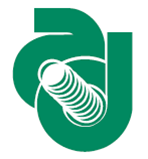Speaker
Mr
Yacine Haddad
(LLR - Ecole Polytechnique)
Description
The limitation of the detection rate of standard bakelite RPC used as muon detectors in the LHC experiments has prevented the use of such detectors in the high eta regions in both CMS and ATLS detectors. The same statement applies for the already instrumented regions in the LHC high luminosity scenario.
One of the alternative to these detectors, is the use of RPC detectors with low resistivity glass plates (10$^{10}$ Ωcm). Several beam tests at CERN and DESY have shown that such detectors can operate at few thousands KHz/cm$^2$ with high efficiency( > 90%). Aging problems were also studied at the GIF facility at CERN and found to be absent after one year of irradiation.
The advantages to use such GRPC as high rate muon detectors is the sub-nanosecond time precision it provides. This is of the utmost importance to reduce the background contribution by improving on the trigger efficiency. The cost of such detector and the fact that it uses the same gas mixture as the standard RPC are also important aspects that favor the use of these detectors
Optional extended abstract
We built few GRPC detectors of 3mm thick, usinga special glass. The glass of low resistivity was developped by our collaborators of the Tsinghua university in Beijng. Beam tests at CERN and more recently at DESY showed that we can obtain rates higher than 10 kHz/cm$^2$. The same kind of results were obtained by our chinese colleagues involved in the CBM project. A new collaboration with French, chinese, Italian, portugese and Belgian groups are being set up to propose such detector for the CMS high eta region

